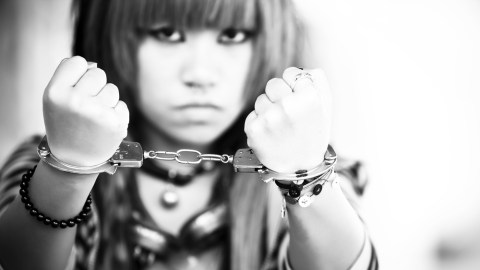What You Didn’t Know about Asian-Americans and Incarceration

Recent attention to police shootings of blacks in a number of cities has brought to light the relationship between African-Americans and the criminal justice system. And to some extent, the media has also highlighted similar issues within Latino communities. For instance, a report from the Drug Policy Alliance from June 2015 shared that 80 percent of the people in federal prison for drug offenses are black or Latino. Much research and political dialogue looks into the source of such gross disproportions when compared to white demographics.
You might be surprised to find out that mass incarceration also impacts Asian-American and Pacific Islander (AAPI) communities, though you have to look at the statistics from a different angle to see why.
In reality, AAPI families and individuals also have a disproportionate involvement with the criminal justice system, a fact which was recently brought to light by a new report, called AAPIs Behind Bars. The report was a combination of efforts among 50 different organizations.
The authors describe how AAPI communities have long been plagued by lack of data from which they could understand their members’ relationship with the criminal justice system. Often in demographic surveys related to criminal justice, they are lumped into a broad category of “Other,” rather than being described uniquely. Among other facts, the report shows that AAPI youth are more than twice as likely as whites to be tried as adults for similar crimes, and that the overall AAPI prison population grew dramatically during the 1990s.
This disproportionate impact matters, even if the total size of the AAPI prison population is much lower than that of other races and ethnicities. Additionally, advocates struggle to also bring to light the issue of detention due to varying immigration status in AAPI communities. In some situations, the immigration and criminal justice systems are quite intertwined and need to be tackled through policy changes together.
Moving forward, it will be important to disaggregate the behemoth “AAPI” category into its constituent groups when talking about criminal justice. AAPIs from Cambodia, Vietnam, Laos, or Samoa often have very different outcomes than those from Japan, Korea, or India, for instance. And within nationalities, different ethnic groups can have quite different experiences. Advocates among the educational sector are already pushing for similar disaggregation so that all students’ needs and strengths can be understood individually. Hopefully, one day that’s how we’ll break down all our statistics.
Below, George Takei addresses current events by comparing them to his experience as an interned Japanese-American during World War II.
**
Stefani is a writer and urban planner based in Oakland, CA. She holds a master’s in City and Regional Planning from UC Berkeley and a bachelor’s in Human Biology from Stanford University. In her free time she is often found reading diverse literature, writing stories, or enjoying the outdoors. Follow her on Twitter: @stefanicox





